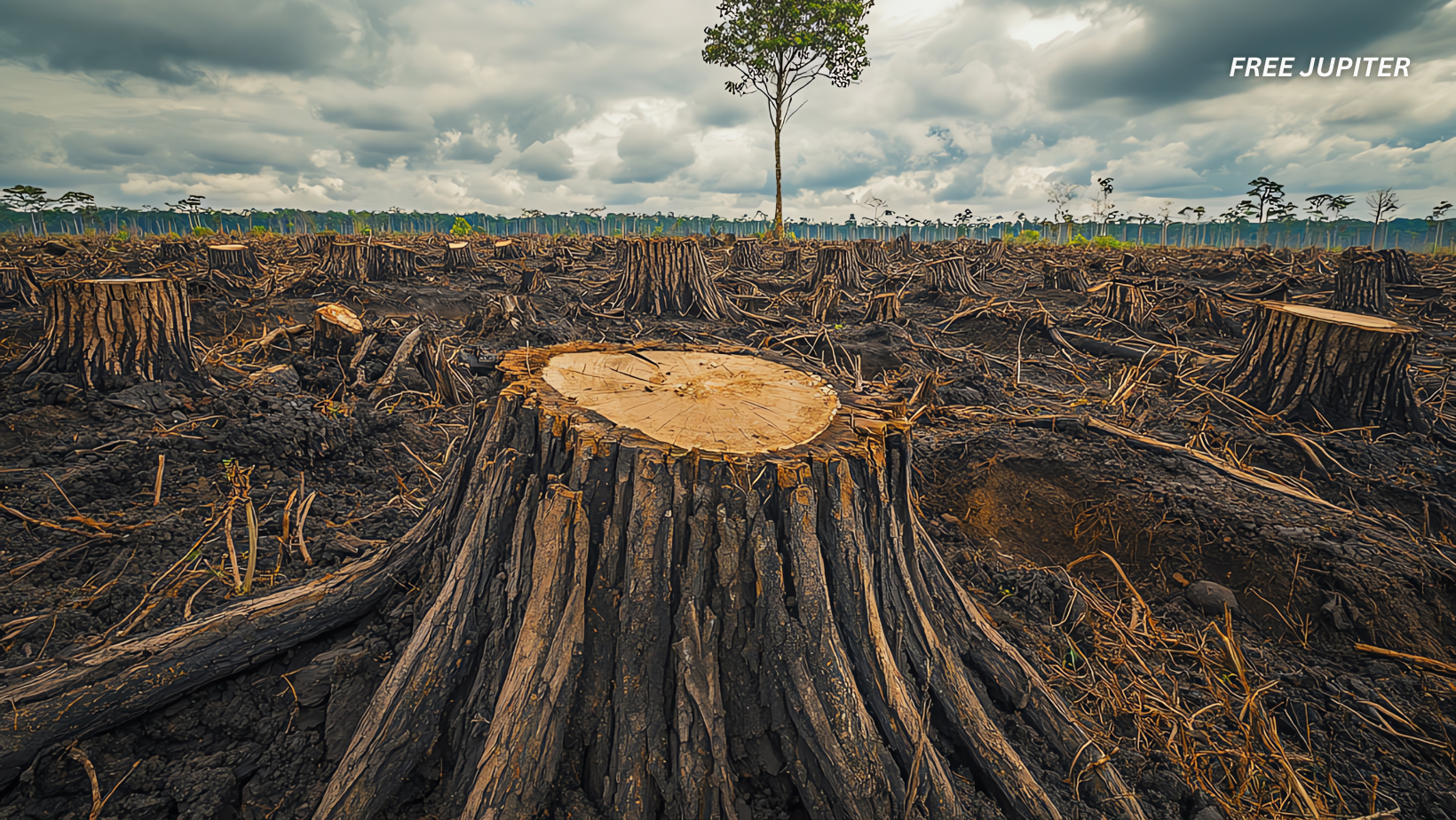Friendly Note: FreeJupiter.com shares general info for curious minds 🌟 Please fact-check all claims—and always check health matters with a professional 💙
Imagine a country flipping the script on business as usual and saying: “From now on, we’re not paying for anything that harms the planet’s forests.” That’s exactly what Norway did—and it wasn’t just an empty gesture.
In 2016, Norway officially became the first country in the world to ban deforestation through its government purchasing rules. That means no government money goes to products, companies, or contracts tied to cutting down forests. If a supplier is linked to destroying trees—either directly or indirectly—Norway simply walks away.
This wasn’t just a tree-hugging PR stunt. It was a serious policy move, and it sent shockwaves through industries that have long relied on forest clearing to keep their profits up.
🌳 The Nuts and Bolts: What Norway Actually Did
The ban is built into Norway’s public procurement policy—basically the country’s shopping list. Any time the government needs supplies, services, or materials, it chooses vendors who don’t contribute to deforestation.
So if a construction firm wants a government contract but sources its timber from illegally cleared land? Nope. If a food supplier offers snacks made with palm oil from devastated rainforests? Not happening.
The ban covers high-risk commodities like:
- Palm oil (used in food, cosmetics, and cleaning products)
- Soy (often used as livestock feed)
- Beef (a top reason forests are cleared, especially in the Amazon)
- Wood and timber products (especially if unsustainably harvested)
This isn’t just Norway being picky about its shopping list. It’s about using economic power to pressure industries and suppliers to be more responsible. After all, money talks.
Read more: Hundreds of Earthquakes Strike Beneath Major US Volcano, Raising Eruption Fears
🛑 Why This Matters: Deforestation and Climate Change
Forests are much more than scenic landscapes—they’re vital to life on Earth. They do a lot of heavy lifting:
- Absorbing carbon dioxide, which helps slow down global warming.
- Regulating rainfall and water cycles.
- Preventing soil erosion and protecting biodiversity.
- Providing homes for 80% of land-based animals and plants.
When forests are cleared—especially in tropical regions—the carbon stored in those trees is released, adding to the already-overloaded atmosphere. It’s estimated that deforestation accounts for up to 15% of the world’s greenhouse gas emissions. That’s more than the entire transportation sector combined.
So when a nation like Norway decides to stop supporting this destruction with its wallet, it’s not just about saving trees—it’s about saving us all from climate chaos.
💸 Walking the Talk: Norway’s $1 Billion Gift to the Amazon
Norway didn’t stop at just writing a rule. It put serious money on the table. The country donated $1 billion to Brazil through the Amazon Fund—a global initiative to help protect the Amazon rainforest.
The fund is designed to support forest preservation, sustainable land use, and monitoring efforts. Norway’s contribution was one of the largest climate-focused donations ever made by a single country. It helped Brazil reduce its deforestation rates significantly in the years that followed, although challenges remain under shifting political leadership.
🌍 Similar Stories:
India’s “Green Wall” and Forest Rights Movement
Norway may have taken the first official step with a procurement ban, but other countries are also waking up to the importance of forests.
India has launched an ambitious plan called the “Green Wall of India,” inspired by Africa’s Great Green Wall project. It aims to restore degraded land and increase forest cover across a 1,400-kilometer stretch from Gujarat in the west to Delhi in the north. The goal? Combat desertification, protect wildlife, and improve rural livelihoods.
On top of that, India is home to one of the largest forest rights movements in the world. Millions of indigenous people rely on forests for food, medicine, and cultural practices. Through the Forest Rights Act, many of them have been granted legal rights to protect and manage their ancestral forests. In some areas, this has actually reduced deforestation compared to state-managed forests.
While India hasn’t banned deforestation through public contracts like Norway, it’s exploring different paths to protect its green spaces—often by empowering local communities instead of corporations.
Read more: Birds Can Actually See Earth’s Magnetic Field—Thanks to Quantum Physics
Costa Rica’s Forest Comeback: From Near Collapse to Eco-Hero
Once upon a not-so-distant past, Costa Rica—a country now known for its lush rainforests and eco-tourism charm—was facing an environmental crisis of staggering proportions. In the 1970s and ’80s, the tiny Central American nation had lost over half of its forests. At one point, just 21% of the country was still forested. For a country so rich in biodiversity, that was like pulling the rug out from under its own feet.
But here’s the twist: rather than spiraling into ecological ruin, Costa Rica turned things around—and did so with an urgency and creativity that has become a model for the entire planet.
🌳 What Went Wrong: A Brief Flashback
Let’s rewind. Back in the mid-20th century, Costa Rica’s forests were being cleared at breakneck speed. The main culprit? Agriculture.
- Farmers cleared land for cattle pastures and crop fields.
- Logging operations—both legal and illegal—boomed.
- Government incentives encouraged forest conversion into farmland, unintentionally accelerating destruction.
By the early 1980s, deforestation in Costa Rica was happening at one of the fastest rates in the world. Rich rainforests—home to jaguars, toucans, monkeys, and countless plant species—were being turned into pastureland and monoculture plantations.
The Turning Point: When Trees Got a Second Chance
But Costa Rica didn’t just sit and watch the trees fall.
In the late 1980s and early 1990s, the government began taking bold, innovative steps to stop the ecological freefall. One key ingredient in their success story? Payment for Ecosystem Services (PES).
This approach, launched formally in 1996, basically pays landowners to preserve nature. Instead of profiting from cutting down trees, landowners were paid to let forests grow. It flipped the old incentives on their head.
- Landowners receive annual payments for reforesting or maintaining forested land.
- The money comes from a small fuel tax and support from international donors.
- Farmers, indigenous communities, and private landholders all qualify.
- The more sustainable your land use, the more you earn.
Suddenly, keeping the trees was just as profitable—if not more—than cutting them down.
🧭 Why Norway’s Move Sets a Global Precedent
Norway’s decision to link environmental ethics with public spending is quietly revolutionary. It flips the traditional model—where economic interests usually override environmental concerns—on its head.
The idea is simple but powerful: governments should not be complicit in destroying the Earth.
This model could easily be copied by other nations, especially those in Europe, North America, and even parts of Asia. In fact, there are already whispers of similar policies emerging. The European Union is working on regulations that would ban imports of products linked to deforestation, including beef, coffee, cocoa, and palm oil.
And while these policies may take time to implement, the writing is on the wall: business as usual is no longer sustainable.
Read more: Scientists Reveal The Oldest Rocks Ever Found on Planet Earth
🐾 Final Thought: One Small Country, One Giant Step for Forestkind
It’s easy to think of Norway as a tiny country tucked in the icy north, with more fjords than factories. But its influence stretches far beyond its borders. With this one policy move, it has proven that even small nations can lead the charge on big environmental issues.
By saying “no” to deforestation, Norway is doing more than protecting trees. It’s redefining what responsible leadership looks like in the face of climate change.
And as the world continues to wrestle with the effects of extreme weather, vanishing biodiversity, and rising carbon levels, other countries may just find themselves looking to Norway and thinking, “Maybe it’s time we did that, too.










